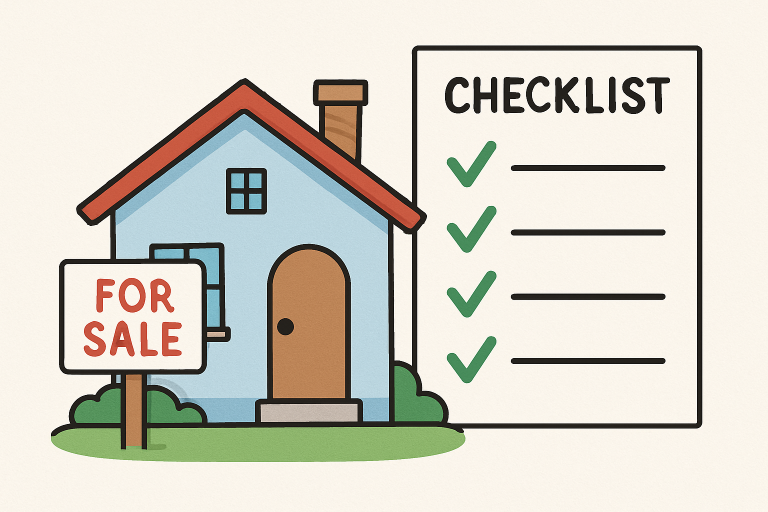Key Takeaways
- Understanding the home-buying journey can reduce stress and save time.
- Preparation and budgeting help uncover what is truly affordable.
- Research and professional guidance are invaluable for first-time buyers.
- Knowledge of market trends and buyer resources makes decision-making easier.
Setting Your Goals and Budget
Embarking on the journey to homeownership calls for clarity and intention right from the start. Determining your financial range, lifestyle needs, and desired neighborhood sharpens your vision and makes the process less daunting. When narrowing down your options, it helps to browse Colorado Springs CO homes for sale to get a realistic picture of what’s available within your preferred criteria.
Establishing your home-buying budget is essential. Begin by analyzing your financial health, including your income, expenses, debts, and savings. Experts often suggest the 28/36 rule—limiting housing costs to no more than 28% of gross monthly income and total debt (including your new mortgage) to no more than 36%. This creates a financial buffer for unexpected expenses while ensuring you’re comfortable with potential monthly payments.
Researching Home Markets
Market research is foundational when searching for the right place to call home. Study recent sales, neighborhood trends, local amenities, and quality of schools to gauge a community’s fit for your long-term happiness and financial goals. Tools like market reports from the National Association of Realtors can guide you by providing comprehensive data on pricing, days on market, and inventory trends.
Consider your daily commute, access to public transit, and proximity to shopping, parks, and entertainment. These factors often impact your future satisfaction as much as a home’s features or price. Exploring neighborhoods online or in person is a step that pays off for years to come.
Identifying Must-Haves vs. Nice-to-Haves
Being able to distinguish between your non-negotiables and preferences ensures efficiency in your search and negotiations. Draft a list of must-haves, such as the number of bedrooms, a home office space, or pet-friendly features like a fenced yard. Nice-to-haves might include amenities like a finished basement, smart home upgrades, or a view. This list serves not only as your internal guideline, but also as a helpful communication tool for your real estate professional.
Why Mortgage Pre-Approval Matters
Mortgage pre-approval is one of the most strategic moves you can make before making an offer. Pre-approval involves a lender reviewing your finances and committing, in writing, to providing you with a loan up to a specified amount. This signals sellers that you are a serious and qualified buyer, giving your offer additional weight—fundamental in hot or highly competitive markets. According to Bankrate, starting with pre-approval can help you act quickly and negotiate more effectively, potentially securing better terms or even outbidding others.

Making an Offer With Confidence
Once you’ve found a home that checks most of your boxes, it’s time for your agent to help you craft a compelling offer. Analyze recent comparable sales, seller motivations, and current supply-demand dynamics. Your offer should also include protective contingencies—such as financing, appraisal, or inspection clauses—which allow you to back out or renegotiate if new information emerges. Discuss strategy with your agent to balance assertiveness with prudence for the best chance at acceptance.
The Role of Home Inspections and Appraisals
Home inspections and appraisals are critical in safeguarding your investment. An inspection uncovers hidden issues—from foundation cracks to outdated electrical systems—before they become your financial responsibility. Lenders also require an appraisal to confirm that the property’s market value supports the loan amount. This protects you from overpaying and may allow renegotiation if problems arise.
Be present during the inspection to ask questions and better understand the home’s condition. According to a report from Forbes Advisor, leveraging your inspection results can occasionally help lower the purchase price or negotiate repairs before closing.
Navigating Closing Day
Closing day marks the official transfer of property ownership. You’ll meet at a title company or attorney’s office to sign paperwork, settle closing costs, and receive the keys. Before closing, conduct a final walk-through to verify that repairs have been completed and that the property is in the agreed-upon condition. Closing costs typically range from 2% to 5% of the purchase price and can include fees for the loan, title search, homeowner’s insurance, and property taxes.
Additional Resources and Support for Buyers
Navigating the path to homeownership can feel overwhelming, especially for first-timers. Local housing counseling agencies, first-time buyer workshops, and state-run assistance programs offer valuable education and resources. Follow reputable news sources like CNBC Real Estate to stay updated on changing market dynamics and buyer opportunities. Consulting with experienced agents, lenders, and attorneys will help ensure a smooth, informed experience from start to finish.
